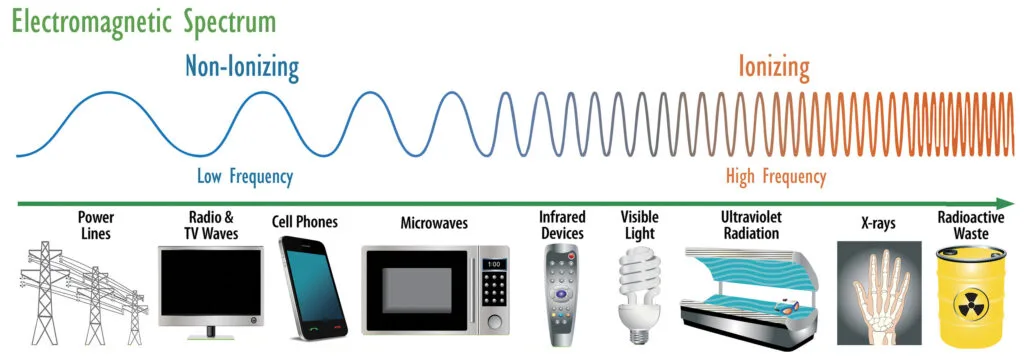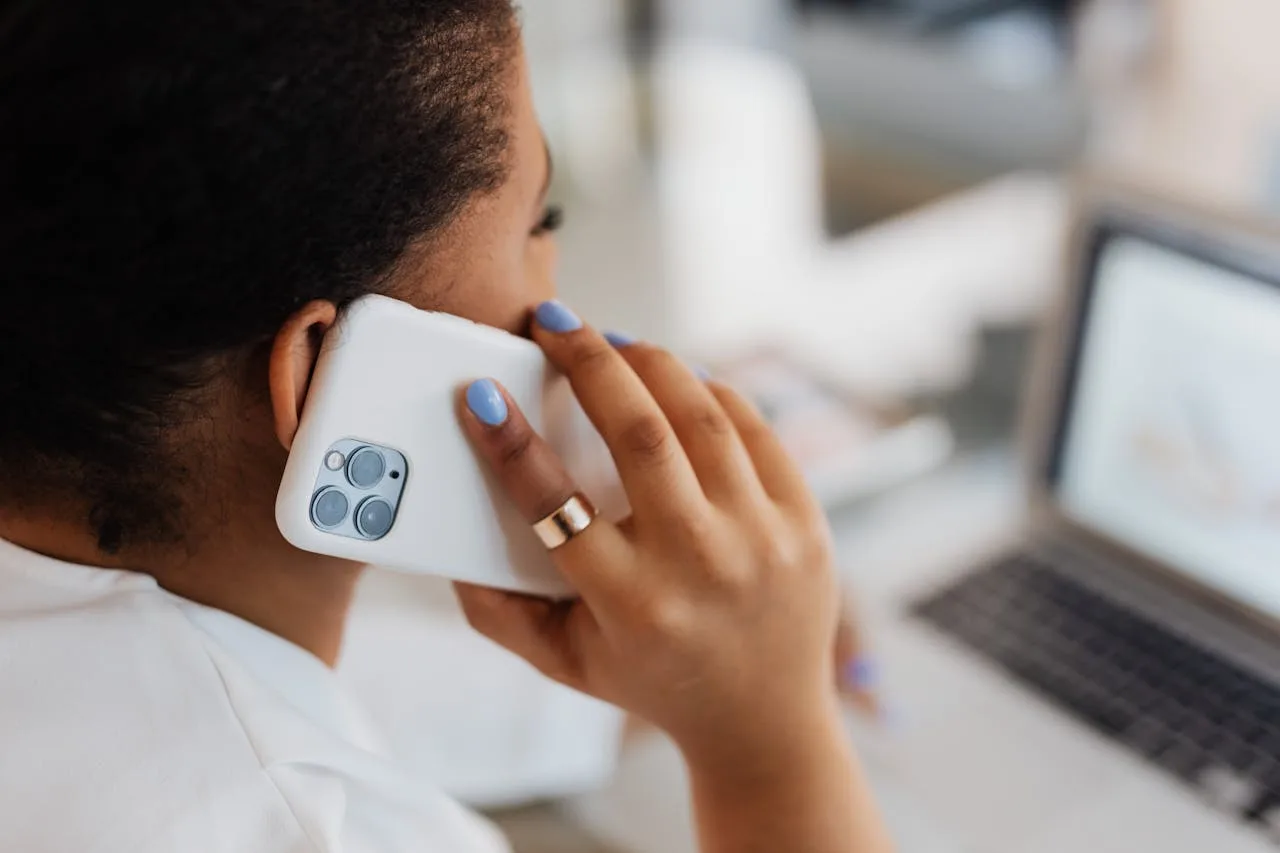There is an opinion that when talking on a cell phone, a person is exposed to harmful radiation, and this can lead to the development of cancer. We decided to check whether there are grounds for such concerns.
Over the last decade, many media outlets have written about the fact that talking on a mobile phone provokes cancer (for example, “Newspaper.ru", "Kommersant", "News", News.ru, "RIA Novosti") and others informational And entertaining resources. Similar statements can be found in some medical portals where experts advise using a headset or headphones when making calls to reduce the negative impact. True, in other sources approvedthat wireless headphones are not a panacea and also cause cancer. On the Internet you can find publications that dangerous radiation from smartphones is constantly emitted, and not just during a conversation, therefore, for example, to prevent cancer, it is advised not to place gadgets next to the bed at night.
In 2022, the UN International Telecommunication Union statedthat 73% of the world's population use mobile phones, in Europe and the CIS countries - more than 90%. Because of this, it is quite difficult to use scientific methods to identify a correlation between cell phone ownership and the occurrence of cancer - finding a control group that has not used such devices for many years is almost impossible in the modern world. Cell phones have become widespread relatively recently, and if they really provoke the development of cancer, it would be logical to assume that as their number increases, the number of cancer patients should also increase. However, the US National Cancer Institute assertsthat over the past decades, the average annual number of newly diagnosed cases of cancer of the brain and other organs of the central nervous system has remained at the same level.
Fears that cell phones may cause cancer stem from the radiation these devices emit. This is the principle of their operation - they communicate with each other by transmitting radio waves through communication towers. However, we are not talking about the kind of radiation, the mention of which many people remember about nuclear bombs or the accident at the Chernobyl nuclear power plant.
Radiation It can be ionizing or non-ionizing. The first can actually damage DNA molecules in the human body, which, in turn, can cause cancer. Ionizing radiation includes, for example, X-rays or ultraviolet rays. Non-ionizing radiation is not believed to cause DNA damage. To this type applies, such as radiation from microwave ovens, computers, mobile phones and devices using WiFi and Bluetooth technologies.

World Health Organization (WHO), Centers for Disease Control (CDC) and National Institute US Environmental Health Sciences, and International Commission on protection against non-ionizing radiation, they claim that today there is no scientific data to answer in the affirmative the question of whether radiation from mobile phones can provoke the development of cancer. We agree with this and experts The US National Cancer Center, which reviewed the best research in this area and also did not find any convincing results confirming that cell phone radiation can cause cancer.
In 2018, experts from the US National Toxicology Program published the results of an experiment in which laboratory rats and mice were exposed to radiation throughout their lives. It was similar to that used in 2G and 3G cellular technologies. Scientists have indeed obtained evidence that in animals there is a connection between radiation exposure and the development of malignant neoplasms of the heart, brain and adrenal glands. However, the researchers note that the effects on rats and mice in the experiment cannot be compared with what a person is exposed to when using a mobile phone. First, scientists irradiated the entire body of rodents, whereas in humans only small areas of the body are exposed to radiation. Secondly, the minimum level of radiation exposure for test rodents was equal to the maximum permissible human exposure to telephone radiation in the United States. The maximum level of exposure to animals was four times higher than the permissible level for humans. The exposure time was also longer—about nine hours a day. Few people talk on a cell phone for that long every day.
The level of exposure to radiation from a telephone on a person is determined using specific absorption coefficient (SAR). This is a measure of the rate at which the body absorbs radiofrequency energy from the source being measured—in this case, the gadget. Manufacturers are required to carry out appropriate tests, and in order for their products to reach stores, maximum SAR values must be below those considered safe by regulatory authorities in a given country. In 2023, the French National Frequency Agency banned in the country of sale of the iPhone 12 due to exceeding the permissible level. Apple Company stated, that the smartphone could indeed emit slightly more intense radiation, but only when it was lying on a static surface and not in contact with the human body, and the agency simply did not take this nuance into account when testing. However, the iPhone maker released a software update for French users that fixed the issue.

It would be logical that concerned buyers might choose devices with the lowest SAR ratings to reduce risks, but this indicator does not reflect the real picture. The fact is that only the maximum SAR values that are observed under the most extreme operating conditions are included in the documentation. These numbers are different in normal use, and there is no guarantee that if one phone has a lower SAR than another during testing, that its SAR will also be lower in normal use.
International Agency for Research on Cancer classifies the impact of mobile phones on human health as “possibly carcinogenic”, even though most scientific research has not found a direct relationship and many reputable medical organizations deny it. However, almost all researchers agree that extensive additional research, including in humans, is needed to definitively answer the question of whether cell phone radiation can cause cancer. Their implementation is largely complicated the fact that regular exposure of people to large doses of radiation is impossible for ethical reasons, so the main method becomes statistical, based on user self-reports. At the same time, it is difficult to establish the reliability of the information provided, because people with and without diagnosed cancer may assess the frequency and duration of phone use differently, and the diagnosis may distort their perception. In addition, brain tumors often negatively affect cognitive function, which also complicates interviewing patients. Another challenge for conducting research is that mobile phones are constantly improving, including from a security point of view, so data on the impact that models of the early 2000s may have had is no longer relevant for modern smartphones.
It is worth noting that most of the research focuses on exposure to radiation similar to that used in 2G and 3G cellular communications. New generation cellular communications are now actively developing - 5G. Its long-term effects on humans and animals have not yet been studied. The radiation used for 5G is higher frequency, but it is still a non-ionizing type of radiation that cannot destroy DNA. In addition, it is more difficult for high-frequency radio waves to pass through tissues and objects, which means there is reason to believe that the impact of 5G network waves on human internal organs is even less likely.

To minimize the risks of negative exposure to cell phone radiation, CDC experts advise use a headset and speakerphone. Wireless Bluetooth headphones also emit radio frequency waves, but their power is many times lower than that of mobile phones. Experts agree with this advice WHO, US National Cancer Center And American Cancer Society. In addition, it is worth avoid calls when the network signal is weak, as this leads to an increase in the radio frequency power of cell phones.
Excessive use of smartphones can be hazardous to health, regardless of radiation. For example, a huge amount of microbes, since people use devices almost everywhere - from public transport to the toilet, and disinfect them much less often than wash their hands. Therefore, it’s probably not a good idea to bring gadgets to your face one more time. However, the same applies to headphones — if you don’t disinfect them regularly, you can get an infection in your ears. In addition, in 2017, Korean scientists held magnetic resonance spectroscopy (a type of test that helps determine the chemical composition of the brain) of 19 young people diagnosed with smartphone and Internet addiction, as well as their 19 healthy peers. It has been found that excessive use of a mobile phone appears to cause chemical changes in the brain, which increases the likelihood of developing depression, anxiety and insomnia. And this is not the entire list problemswhich can result from cell phone abuse.
Thus, almost all reputable medical organizations agree that, despite years of research, there is currently no convincing scientific evidence that radiation from mobile phones can provoke cancer. Firstly, the frequency at which they transmit data is too low and is unable to destroy human DNA molecules (which causes the development of cancer). Secondly, regulatory authorities in different countries establish a safe level of radiation, and all devices that go on sale must comply with it. Therefore, it does not matter how much charge the phone has left, whether it is connected to a charger, or how good the communication signal is, the radiation must not exceed the permissible safe limit, otherwise such a device would not receive permits or would be taken off the market. However, you can always further reduce the risks by talking on the phone on speakerphone or through headphones (even wireless ones, because the radiation from them is still much weaker than from a telephone).
Cover photo: pexels.com
Read on the topic:
- WHO. Electromagnetic fields and public health: mobile phones
- National Cancer Institute. Cell Phones and Cancer Risk
- Is it true that cacti protect against computer radiation?
- Is it true that standing in front of a microwave with the door open is harmful?
- Is it true that sleeping next to a charging phone is harmful?
If you find a spelling or grammatical error, please let us know by highlighting the error text and clicking Ctrl+Enter.






